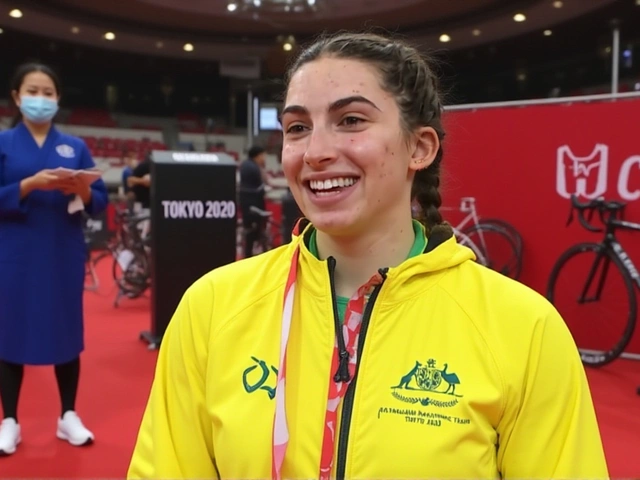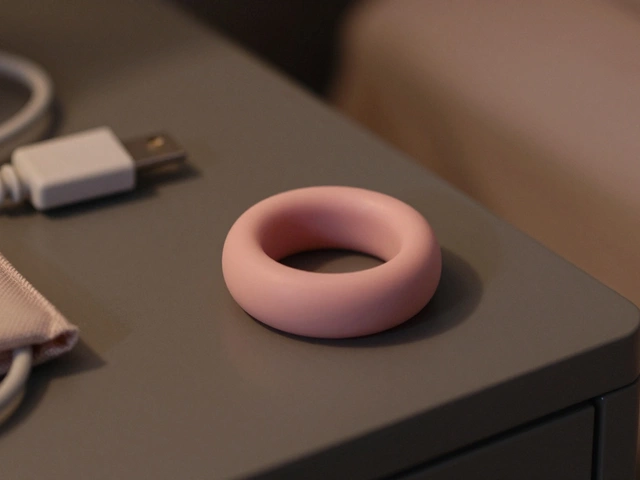Paige Greco OAM, one of Australia’s most dominant Paralympic cyclists, died suddenly on Paige Greco at just 28 years old, leaving the global para-sports community in shock. The news broke on November 16, 2025, after a sudden medical episode cut short the life of an athlete who had redefined what was possible in track and road cycling. Born on February 19, 1997, Greco competed in the C1-3 classification — a category for athletes with moderate to severe impairments — and became a symbol of resilience, precision, and quiet determination. Her death, while still under investigation, has sparked urgent conversations about athlete health monitoring, especially in high-intensity para-sports.
World Records and Golden Moments
Greco didn’t just compete — she shattered expectations. At the 2019 UCI Para-cycling Track World Championships in Apeldoorn, she stunned the field with two world records in a single day. Her 3,000m individual pursuit time of 4:00.206 sliced three seconds off the previous mark. Then, in the 500m time trial, she clocked 39.442 seconds — nearly two seconds faster than anyone had ever gone before. She added a silver in the scratch race, proving she wasn’t just a specialist but a complete athlete. But it was at the 2020 Tokyo Paralympics that she cemented her legacy. In the gold medal race of the women’s 3,000m individual pursuit C1-3, Greco set a new world record: 3:50.815. That’s faster than most able-bodied cyclists could manage on a velodrome. She also took bronze in both the road time trial (26:37.54) and the road race (1:13:11), becoming one of Australia’s most decorated Paralympians in a single Games.Behind the Bike: A Life Beyond the Podium
Greco lived with cerebral palsy affecting the right side of her body — a condition that could have sidelined many. Instead, she turned it into fuel. She didn’t just train harder; she trained smarter. After graduating with a degree in Exercise Science from the University of South Australia, she applied her academic knowledge to her own training, working closely with sports scientists to optimize power output, recovery, and biomechanics. Her Medal of the Order of Australia (OAM), awarded in 2021, wasn’t just for medals — it was for how she inspired others. Young athletes with disabilities saw in her not a victim of circumstance, but a master of control. "She didn’t talk about her disability," said former teammate Kylie Grimes in a 2023 interview. "She talked about speed. About line choice. About how to push the pedals harder. That’s what made her dangerous." In 2025, she competed one last time at the UCI Para-cycling Road World Championships in Ronse, finishing fifth in the time trial and taking bronze in the road race. It was a quiet, determined performance — no podium fireworks, just grit. That’s the Paige many knew: humble, focused, relentless.Why This Hits So Hard
Her death at 28 is especially jarring because she was at the peak of her career. Unlike many athletes who retire due to injury or age, Greco was still improving. Her coach, Darren Hockley, told reporters she’d been "on track for Paris 2024" — a goal she’d been quietly preparing for since Tokyo. What makes this even more painful is the lack of warning. No public injury. No prolonged illness. Just a sudden episode. The Australian Paralympic Committee confirmed the cause is under investigation, but early reports suggest a possible cardiac issue. That’s raised alarms across the para-sports world. While elite athletes are routinely screened, the protocols for those with neurological conditions like cerebral palsy are less standardized. "We test for heart rhythm in able-bodied cyclists," said Dr. Naomi Tanaka, a sports cardiologist at the Australian Institute of Sport. "But for athletes with cerebral palsy, the interaction between muscle spasticity, autonomic nervous system function, and cardiovascular demand is still poorly understood. We’re playing catch-up."
What Comes Next
The Australian Paralympic Committee has announced a review of medical protocols for para-athletes with neurological impairments. A memorial ride is planned for December 1 in Adelaide, where Greco trained. Her family has asked for donations to be made to the Cerebral Palsy Alliance in her name. There’s also talk of renaming the women’s 3,000m pursuit at the World Championships after her — a fitting tribute to the woman who once owned that event. Her world record in Tokyo still stands. No one has come close since.Legacy in Motion
Greco didn’t just win races. She changed the conversation. Before her, many saw para-cycling as an endurance test. She made it a science — a ballet of power, timing, and mental toughness. Her training logs, now being studied by universities in Germany and the Netherlands, show a methodical approach to pacing and recovery that’s being adopted across disciplines. And then there’s the quiet, lasting impact: the kids in Wheelchair Sports SA who now say, "I want to be like Paige." The coaches who now ask, "What would Paige do?" The way her name is whispered in velodromes around the world — not as a past champion, but as a standard.Frequently Asked Questions
What caused Paige Greco’s death?
The exact cause remains under investigation by Australian health authorities, but early indications point to a possible cardiac event. Greco had cerebral palsy, which can affect autonomic nervous system regulation, potentially increasing vulnerability to sudden arrhythmias during intense exertion. No prior heart condition was publicly known, and she had passed standard medical screenings.
How did Greco’s cerebral palsy impact her cycling performance?
Her cerebral palsy affected the right side of her body, causing muscle spasticity and reduced coordination. But rather than limiting her, it shaped her technique. She developed exceptional left-leg power and precise bike handling, allowing her to outmaneuver rivals with smoother, more efficient strokes. Her Exercise Science degree helped her tailor training to her unique physiology — turning a challenge into a competitive edge.
What records did Paige Greco hold?
Greco held world records in the C3 women’s 3,000m individual pursuit (3:50.815, set at Tokyo 2020) and the 500m time trial (39.442 seconds, set at the 2019 World Championships). Both remain unbroken as of late 2025. She also set a world record in qualifying for the 3,000m pursuit at Apeldoorn with 4:00.206 — a time that still ranks among the fastest ever recorded in the C1-3 class.
Will there be a memorial or tribute for Paige Greco?
Yes. A memorial ride is scheduled for December 1, 2025, in Adelaide, starting at the Australian Institute of Sport velodrome. The Australian Paralympic Committee is also exploring renaming the women’s 3,000m pursuit world championship event in her honor. Her family has requested donations go to the Cerebral Palsy Alliance to support athlete health initiatives.
What’s being done to prevent similar tragedies in para-sports?
The Australian Paralympic Committee has launched an urgent review of medical protocols for athletes with neurological conditions. Experts are calling for mandatory cardiac MRI and autonomic function testing for para-cyclists with cerebral palsy — a step not currently standard. International cycling bodies are expected to adopt similar guidelines ahead of the Paris 2024 Paralympics, though implementation may take months.
How did Paige Greco compare to other Paralympic cyclists?
Greco was among the most dominant C3-class cyclists of her generation. Her 2020 Tokyo gold in the 3,000m pursuit was the fastest time ever recorded in that event across all C1-3 classifications — faster than any gold medalist in the previous three Paralympic cycles. She outperformed multiple world champions from the Netherlands and Great Britain, often by margins of 1.5 to 3 seconds — enormous in elite cycling. Her consistency across track and road events made her uniquely versatile.





